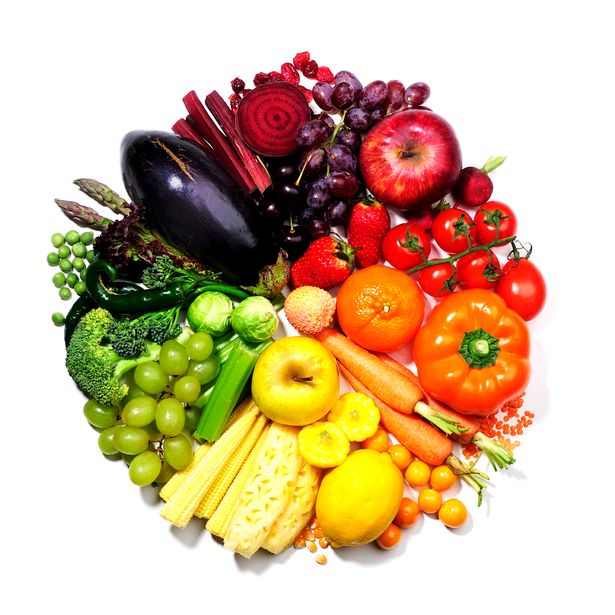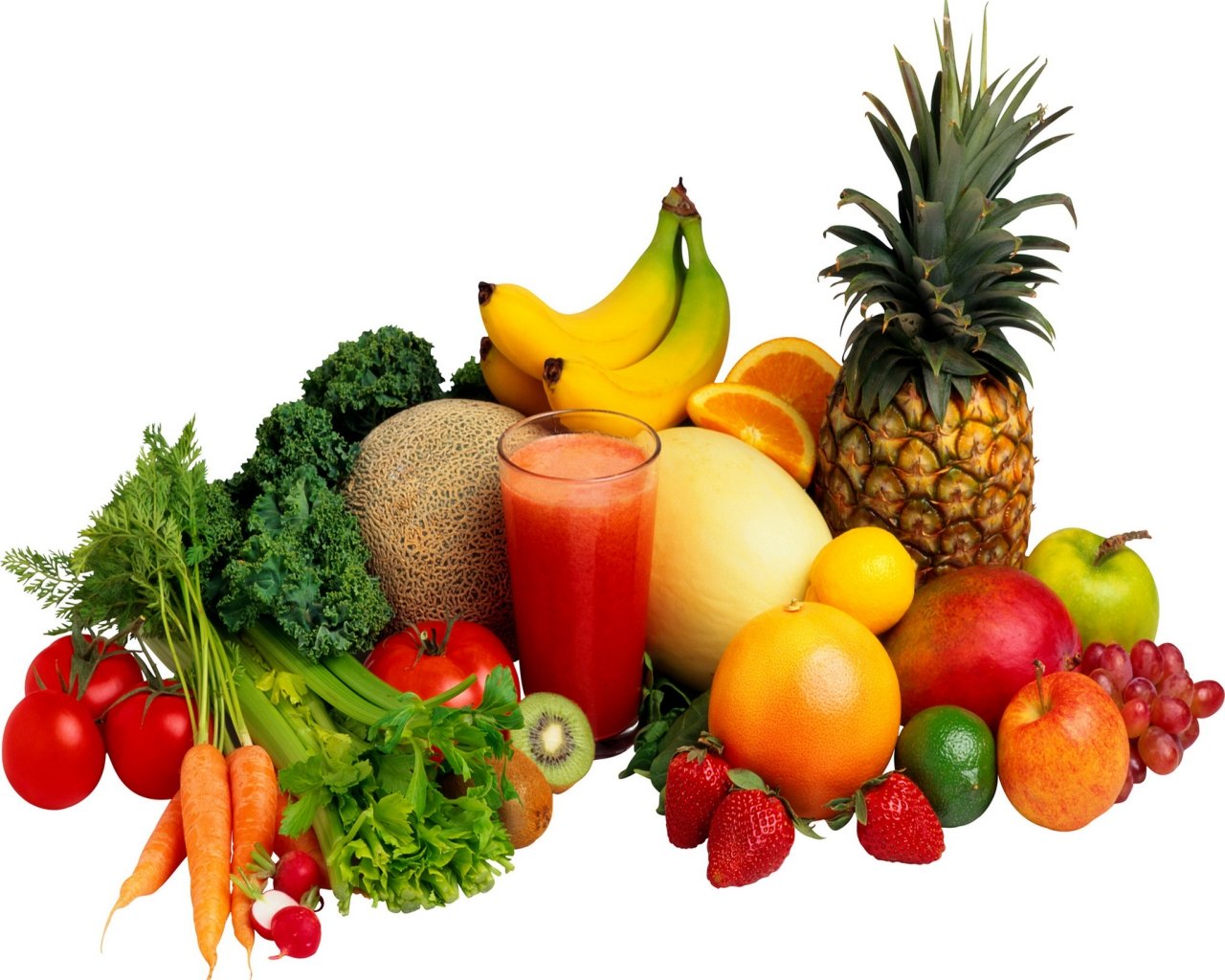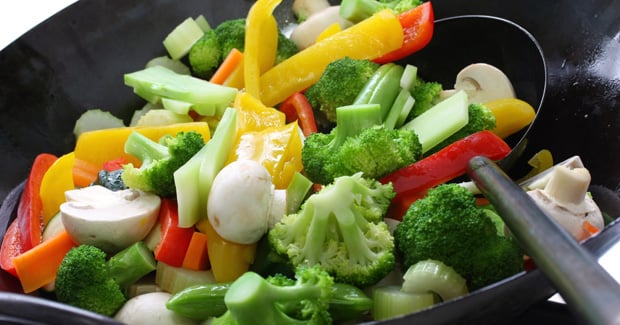How Can I Eat More Fruits and Veggies?

by Judy Palken, MNS, RD, LDN
Question from a Reader I know I need to eat more fruits and vegetables, but how can I possibly get in 5 servings, or whatever it is we are supposed to eat, without feeling like a rabbit constantly eating carrots?
Reader Great question, with a lot of fun and creative answers! First, the updated news - current recommendations are to eat at least 7-10 servings per day of fruits and vegetables. Most people don’t get in nearly that. But stay with me, because of the wonderful benefits of these foods, and also it isn’t as hard as you might think!
Fruits and vegetables are loaded with phytochemicals that act as antioxidants and anti-inflammatory compounds, and can help to lower our risk of heart disease and cancer, and a variety of other conditions. Fruits and veggies are rich in vitamins, minerals, and also fiber, which can help us to feel satisfied, and limit the calories we take in.
Rather than having it be a chore to get in your fruits and veggies, the key is to find delicious ways to incorporate them all throughout the day, so that every meal and snack has some.
How much is a serving? For vegetables consider a serving to be about half of a cup raw or cooked, except for raw leafy greens, where a serving is one cup. For vegetable juice, a serving is one half cup.
For fruits, a serving is one medium fruit, or about half of a cup. For dried fruit, it is one quarter cup. For fruit juice, one half cup - but you should limit fruit juice to one serving per day, as whole fruit is a better choice.
Note - these serving sizes are guides only - let’s say you decide to munch on a carrot - you may call it a serving! Or you were out picking raspberries, and you ate a big handful - call it a serving! It’s important not to get caught up in the exact portion size - remember, your focus and your goal should be to get in a lot of these great foods! An exception - dried fruit is very concentrated, so it can be very easy to eat too much, and take in a lot of unintended sugar and calories. Portion size is important with dried fruit!
- Fit for compost, Oh No! Often we bring fruits and vegetables into our homes with the very best of intentions, only to find them in our refrigerators two weeks later, fit only for the compost pile. Don’t let that happen to you - use the tips below to get them all in to you consistently. You might enjoy them so much that 7-10 servings doesn’t seem like enough, and you’ll want more!
- Use your freezer - buy bags of chopped spinach, Brussels sprouts, unsweetened berries, cherries… frozen produce retains its vitamin and mineral content, and even if you prefer fresh, frozen is great to have on hand for those times that we run out!
- Take a few minutes to prep after food shopping - you might not feel like it at that moment, but I promise, you will thank yourself later! Wash fruits like apples, pears, and plums, place on a clean dish towel to dry, and put them out in a fruit bowl. If they are washed and ready to eat, you will eat them. Wash, dry, and store lettuce loosely in a bag in the fridge. Wash celery; peel carrots. Keep them in a visible spot in the fridge, so you will remember to eat them.
- Make salads a daily delight - your salad ingredients may vary - throw in grape tomatoes one day; grapes the next - but it’s a great idea to make a big, fresh salad that will last you a couple of days, and when that is gone, make another! If you don’t have time for a cooked veggie, you can still serve up your salad.
- Include veggies at breakfast - many of us are accustomed to having fruit (or fruit juice) at breakfast; why not veggies? You can add peppers and onions to eggs, or have a smoothie that includes greens such as kale or spinach. You can even have some of that salad at breakfast!
 Smoothies are the best - keep your blender out, and smoothies can be a part of your daily routine. Use fresh fruit and ice, or frozen unsweetened fruit, and add soy or almond milk, yogurt, or coconut water, and blend!
Smoothies are the best - keep your blender out, and smoothies can be a part of your daily routine. Use fresh fruit and ice, or frozen unsweetened fruit, and add soy or almond milk, yogurt, or coconut water, and blend! - Add crunch to lunch - if you eat sandwiches, always slide in some lettuce, tomato slices, pepper strips, or carrot shreds. If you eat tuna or chicken salad, try adding chopped bits of broccoli, apple, and some raisins. The taste and consistency will go from bland to WOW! and you won’t want them any other way!
- Serve dinner on a bed of greens - it doesn’t matter whether it’s chicken, chili, or pasta - line your plate with a generous amount of fresh greens, then add your entrée. If it was served to you this way in a restaurant, you would call it great presentation!
- It’s one of those days, and you are getting take-out… you can still maximize your return from this meal, improving the nutritional value for your family vastly. If it’s pizza, add a bunch of whatever veggies you have in your fridge - chopped up salad, steamed summer squash, asparagus… if it’s burgers, slip in some lettuce and tomatoes. Even if the pizza or burgers already come with a bit of vegetables, we know the amount is paltry - you can make the vegetables go from being a garnish to being a star!
- Sub fresh for processed whenever you can - steamed, puréed cauliflower is a great replacement for instant mashed potatoes. In a sandwich or on toast, try fresh, mashed berries, or banana slices, instead of sugary jelly or jam. Instead of fruited, sweetened yogurt, try plain yogurt with your own added fruit. Instead of instant oatmeal packets with all their added sugar and salt, prepare your own oatmeal and add fruit - how about apples and cinnamon, bananas and walnuts, or a mix of berries?

- Stir-fry often - chop up your favorite veggies, or buy them pre-cut, washed, and bagged for convenience. Heat a good oil such as extra virgin olive oil or canola oil in a wok or large pan. Cook your veggies quickly, tossing and adding healthful seasonings like garlic and ginger.
- Summer treats - try homemade ice pops, instead of sugary popsicles - freeze a bit of 100% fruit juice with a generous amount of fresh fruit - try watermelon, cantaloupe, strawberries, mango… you can use popsicle molds, or even paper cups — so refreshing!
- Ice cream is a golden opportunity for fruit - add (unsweetened) berries, sliced banana, peaches, any of your favorites. You might even find you can go from a hefty bowl of ice cream with a bit of toppings, to a bowl of sliced fruit garnished with a bit of ice cream!
- Enhance your cooking and baking with fruits and vegetables - pasta sauce loves eggplant, peppers, and mushrooms (puréed or not, your choice!) Toss veggies into soup - carrots, peas, and frozen spinach are some great additions. Pancake, muffin, and brownie batter will gladly accept berries, shredded carrots, zucchini, and bits of pineapple. Ground turkey or beef is a great place to mix in well-chopped veggies. Always be looking, and asking yourself, What can I add? What vegetables and fruits are in my fridge or freezer that can serve my family and me, if only we mix them in and eat them?